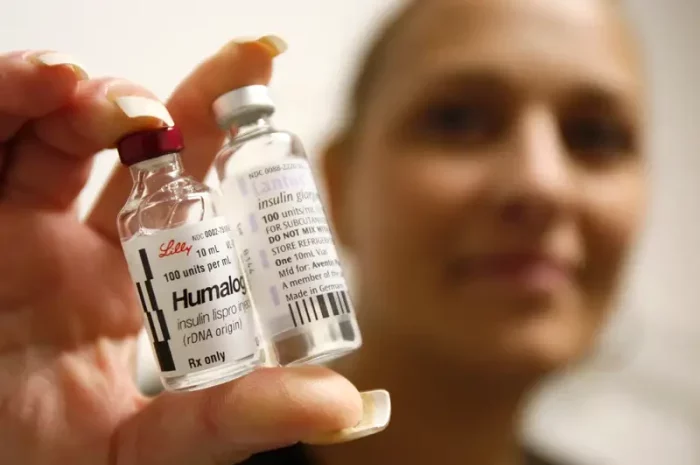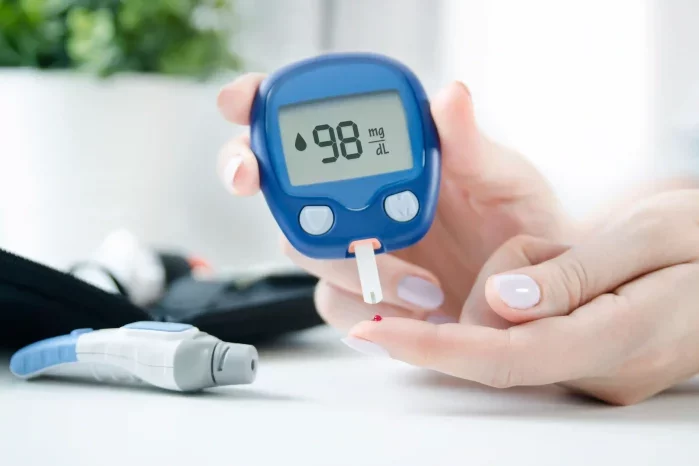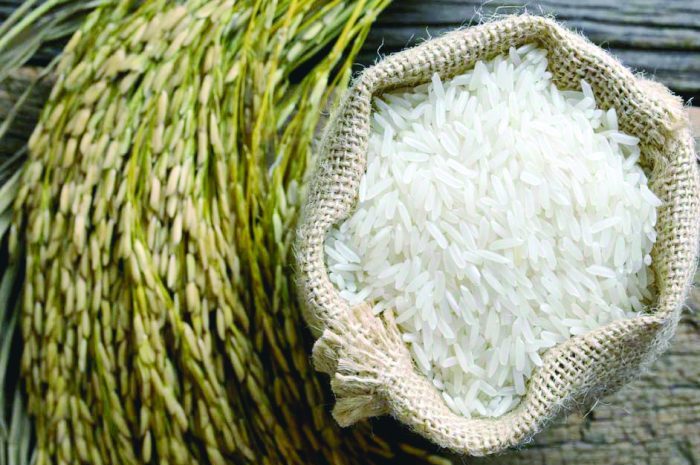Diabetes is a chronic condition characterized by high levels of blood sugar (glucose) due to the body’s inability to produce or properly use insulin. Proper management of diabetes through diet is crucial to prevent complications such as cardiovascular disease, nerve damage, kidney disease, and eye problems. This guide provides a detailed overview of what a diabetic person should eat, focusing on balanced nutrition, portion control, and foods that help maintain stable blood sugar levels.
Understanding Diabetes and Diet
Types of Diabetes
There are primarily three types of diabetes:
Type 1 Diabetes: An autoimmune condition where the body attacks insulin-producing cells in the pancreas.
Type 2 Diabetes: A metabolic disorder where the body becomes resistant to insulin or doesn’t produce enough insulin.
Gestational Diabetes: Occurs during pregnancy and usually resolves after childbirth, though it increases the risk of developing type 2 diabetes later in life.
The Role of Diet in Diabetes Management
Diet plays a pivotal role in managing diabetes. The primary goals are to keep blood glucose levels within the target range, maintain a healthy weight, and prevent complications. A balanced diet for a diabetic should include a variety of nutrients, including carbohydrates, proteins, and fats, while focusing on foods that have a low glycemic index (GI) and provide sustained energy release.
Carbohydrates: Choosing Wisely
Carbohydrates have the most significant impact on blood sugar levels. Therefore, it is essential to choose them wisely and monitor portion sizes.
Types of Carbohydrates
Simple Carbohydrates: Found in sugars and some fruits. They are quickly absorbed and can cause rapid spikes in blood sugar.
Complex Carbohydrates: Found in whole grains, legumes, and vegetables. They are digested more slowly, providing a steady release of glucose into the bloodstream.
Recommended Carbohydrates
Whole Grains: Brown rice, quinoa, whole wheat, oats, and barley. These have a lower GI and are rich in fiber, which helps regulate blood sugar levels.
Non-Starchy Vegetables: Broccoli, spinach, kale, cucumbers, peppers, and tomatoes. They are low in carbohydrates and calories but high in vitamins, minerals, and fiber.
Legumes: Beans, lentils, and chickpeas. These are excellent sources of protein and fiber, contributing to slower digestion and stable blood sugar.
Fruits: Berries, apples, pears, and citrus fruits. These have a moderate GI and are packed with fiber, vitamins, and antioxidants. It is important to consume them in moderation.
Carbohydrates to Limit or Avoid
Refined Sugars: Found in candy, soda, baked goods, and many processed foods. They cause rapid spikes in blood sugar and provide little nutritional value.
Refined Grains: White bread, white rice, and most pastries. These have a high GI and lack the fiber and nutrients found in whole grains.
Starchy Vegetables: Potatoes, corn, and peas. While they can be part of a healthy diet, they should be consumed in moderation due to their higher carbohydrate content.
Proteins: Essential Building Blocks
Protein is crucial for the repair and maintenance of body tissues and has minimal impact on blood sugar levels.
Recommended Protein Sources
Lean Meats: Skinless poultry, lean cuts of beef, and pork.
Fish: Especially fatty fish like salmon, mackerel, and sardines, which are rich in omega-3 fatty acids that benefit heart health.
Plant-Based Proteins: Beans, lentils, tofu, tempeh, and edamame. These also provide fiber and essential nutrients.
Eggs: A good source of high-quality protein and essential nutrients.
Low-Fat Dairy: Greek yogurt, cottage cheese, and milk. These provide protein and calcium but should be consumed in moderation due to their carbohydrate content.
Proteins to Limit or Avoid
Processed Meats: Sausages, bacon, and deli meats. These often contain added sugars, unhealthy fats, and preservatives.
High-Fat Meats: Such as rib-eye steak and lamb chops. These can contribute to higher calorie intake and increased risk of heart disease.
Fats: Focus on Healthy Fats
Fats are an essential part of the diet, providing energy, supporting cell growth, and protecting organs. However, the type of fat consumed is critical for heart health, particularly in diabetics who are at higher risk for cardiovascular disease.
Recommended Fats
Monounsaturated Fats: Found in olive oil, avocados, and nuts. These fats can help reduce bad cholesterol levels and are heart-healthy.
Polyunsaturated Fats: Found in sunflower oil, flaxseeds, and walnuts. Omega-3 fatty acids, a type of polyunsaturated fat found in fatty fish, are particularly beneficial.
Nuts and Seeds: Almonds, chia seeds, and flaxseeds provide healthy fats and fiber. They should be consumed in moderation due to their high calorie content.
Fats to Limit or Avoid
Saturated Fats: Found in butter, cheese, and high-fat meats. These can increase bad cholesterol and the risk of heart disease.
Trans Fats: Found in many fried foods, baked goods, and processed snacks. These are unhealthy fats that raise bad cholesterol and lower good cholesterol levels.
Balancing Macronutrients: Creating a Plate
Creating a balanced meal involves considering the proportions of carbohydrates, proteins, and fats on your plate.
The Plate Method
Half the Plate with Non-Starchy Vegetables: Fill half your plate with non-starchy vegetables like spinach, broccoli, or peppers.
Quarter of the Plate with Protein: Add a quarter of your plate with lean protein such as grilled chicken, fish, or beans.
Quarter of the Plate with Whole Grains or Starchy Vegetables: The remaining quarter should include whole grains like brown rice or starchy vegetables in moderation.
Portion Control
Portion control is vital in managing blood sugar levels. Using smaller plates, measuring portions, and avoiding second helpings can help maintain a healthy weight and blood sugar levels.
Fiber: The Unsung Hero
Fiber is a type of carbohydrate that the body cannot digest. It helps regulate the body’s use of sugars, keeping hunger and blood sugar in check.
Benefits of Fiber
Improves Blood Sugar Control: Soluble fiber, found in oats, beans, and apples, slows the absorption of sugar and helps improve blood sugar levels.
Promotes Healthy Digestion: Insoluble fiber, found in whole grains and vegetables, aids in digestion and prevents constipation.
Supports Weight Management: High-fiber foods are more filling, which can help with weight control.
High-Fiber Foods
Whole Grains: Brown rice, quinoa, whole wheat, and oats.
Legumes: Beans, lentils, and chickpeas.
Fruits and Vegetables: Apples, berries, carrots, and leafy greens.
Nuts and Seeds: Almonds, chia seeds, and flaxseeds.
Glycemic Index: Choosing Low GI Foods
The glycemic index (GI) measures how a carbohydrate-containing food raises blood glucose. Low GI foods are absorbed more slowly, causing a gradual rise in blood sugar.
Low GI Foods
Non-Starchy Vegetables: Spinach, broccoli, cauliflower, and peppers.
Legumes: Lentils, chickpeas, and black beans.
Whole Grains: Barley, quinoa, and whole wheat.
Most Fruits: Apples, oranges, and berries.
High GI Foods to Avoid
Sugary Snacks: Candy, pastries, and sodas.
Refined Carbohydrates: White bread, white rice, and many breakfast cereals.
Some Starchy Vegetables: Potatoes and corn (in large quantities).
Meal Timing and Frequency
Regular meal timing can help maintain steady blood sugar levels. Skipping meals or having large gaps between meals can lead to blood sugar spikes and crashes.
Recommendations
Regular Meal Schedule: Eat at regular intervals, such as every 3-4 hours.
Balanced Meals: Ensure each meal contains a balance of carbohydrates, protein, and fats.
Healthy Snacks: Incorporate small, healthy snacks if there are long gaps between meals. Examples include a small handful of nuts, a piece of fruit with a small amount of nut butter, or a low-fat yogurt.
Hydration: The Importance of Water
Proper hydration is crucial for overall health, and it can help control blood sugar levels.
Recommended Beverages
Water: The best choice for staying hydrated without adding calories or sugar.
Herbal Tea: Unsweetened herbal teas are a good alternative to sugary drinks.
Coffee: In moderation and without added sugar. Some studies suggest coffee might have beneficial effects on blood sugar levels.
Milk: Low-fat or skim milk in moderation.
Beverages to Limit or Avoid
Sugary Drinks: Sodas, energy drinks, and sweetened teas.
Alcohol: Should be consumed in moderation and never on an empty stomach, as it can cause hypoglycemia (low blood sugar).
Supplements and Superfoods
While a balanced diet should provide most of the nutrients needed, some supplements and superfoods can offer additional benefits for diabetics.
Beneficial Supplements
Chromium: May help with blood sugar control.
Magnesium: Low levels are associated with insulin resistance.
Alpha-Lipoic Acid: An antioxidant that may improve insulin sensitivity.
Superfoods
Cinnamon: May help lower blood sugar levels.
Turmeric: Contains curcumin, which has anti-inflammatory and blood sugar-lowering properties.
Chia Seeds: High in fiber and omega-3 fatty acids.
Berries: Rich in antioxidants and fiber, with a low GI.
Diabetic-Friendly Recipes
To make it easier to implement these dietary recommendations, here are some simple diabetic-friendly recipes.
Breakfast: Greek Yogurt Parfait
Ingredients:
- 1 cup Greek yogurt
- 1/2 cup berries (blueberries, strawberries, or raspberries)
- 1 tbsp chia seeds
- 1/4 cup granola (low sugar)
Instructions:
- Layer Greek yogurt, berries, chia seeds, and granola in a glass.
- Enjoy as a balanced, fiber-rich breakfast.
Lunch: Quinoa and Black Bean Salad
Ingredients:
- 1 cup cooked quinoa
- 1 can black beans, drained and rinsed
- 1 red bell pepper, diced
- 1 small red onion, diced
- 1 avocado, diced
- 2 tbsp olive oil
- 1 lime, juiced
- Salt and pepper to taste
- Fresh cilantro, chopped (optional)
Instructions:
- In a large bowl, combine quinoa, black beans, bell pepper, red onion, and avocado.
- Drizzle with olive oil and lime juice. Season with salt and pepper.
- Garnish with fresh cilantro if desired. Serve chilled or at room temperature.
Dinner: Baked Salmon with Asparagus
Ingredients:
- 4 salmon fillets
- 1 bunch asparagus, trimmed
- 2 tbsp olive oil
- 1 lemon, sliced
- Salt and pepper to taste
- Fresh dill for garnish (optional)
Instructions:
- Preheat the oven to 400°F (200°C).
- Place salmon fillets and asparagus on a baking sheet. Drizzle with olive oil and season with salt and pepper.
- Top each salmon fillet with a lemon slice.
- Bake for 20 minutes or until the salmon is cooked through and asparagus is tender.
- Garnish with fresh dill before serving.
Snack: Apple Slices with Almond Butter
Ingredients:
- 1 apple, sliced
- 2 tbsp almond butter
Instructions:
Serve apple slices with almond butter for a quick and nutritious snack.
See also:What Is The Best Fruit Juice For Diabetics
Conclusion
A well-balanced diet is crucial for managing diabetes and maintaining overall health. By choosing the right types of carbohydrates, proteins, and fats, focusing on low GI foods, and maintaining regular meal timing, diabetics can achieve better blood sugar control. Incorporating high-fiber foods, staying hydrated, and considering beneficial supplements and superfoods can further support health goals.
Adopting these dietary practices not only helps manage diabetes but also promotes overall well-being, reducing the risk of complications and enhancing quality of life. By making informed food choices and maintaining a balanced diet, diabetics can lead healthier, more fulfilling lives.
Related topics:
Which Fruits Are Good For Diabetics To Eat?

























